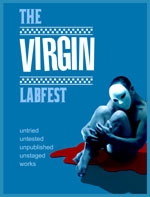Vaya con Dios, Cardinal Sin
31 August 1928-21 June 2005
(Copyright © by the AFP and L’Osservatore Romano) ![]()
Eternal rest grant unto him, O Lord
And let perpetual light shine upon him
May he rest in peace. Amen.
I know this is quite belated but, like what I did on the occasion of Pope John Paul II’s death last April, I purposely held off saying something about the late Jaime Cardinal Sin until after his funeral today.
Like many Filipinos, I only knew him by name, through his important role in both EDSA I and II. I met him in person only once, during my confirmation rites at the EDSA Shrine over a decade ago. And way before that, at the home of my maternal uncle, I saw a picture of him with my maternal grandfather, taken at the latter’s summer house in Antipolo during the mid-1970s. How the Archbishop looked vibrant and young then.
No question about it, history will be kind to the cardinal. No one can ever accuse him of not looking after his flock. He was a true pastor, a genuine shepherd of souls. He may have his critics and have rubbed some people the wrong way at times, but they have to admire him for sticking to his principles, for speaking out when the need for it arose. I know I do. And he always came across somehow as someone approachable and personable, in spite of his exalted position. I guess that partly explains his charisma.
Today’s funeral was dignified, peaceful and somber. Bishop Soc Villegas provided the funeral’s most poignant moment when, at one particular point during his eulogy, he took a sudden, meaningful pause and just when it seemed he was about to break down, he managed to control himself. Many people know how close the bishop was to the late cardinal, and I wouldn’t be surprised if they were touched by that. I was.
Many things have been said about Cardinal Sin since his death. Here’s mine: Maraming, maraming salamat. Magpahinga ka na sa piling Niya.




